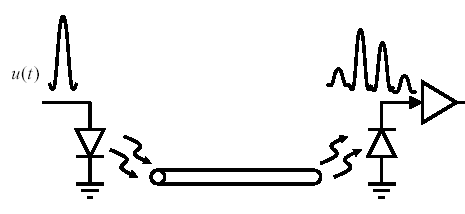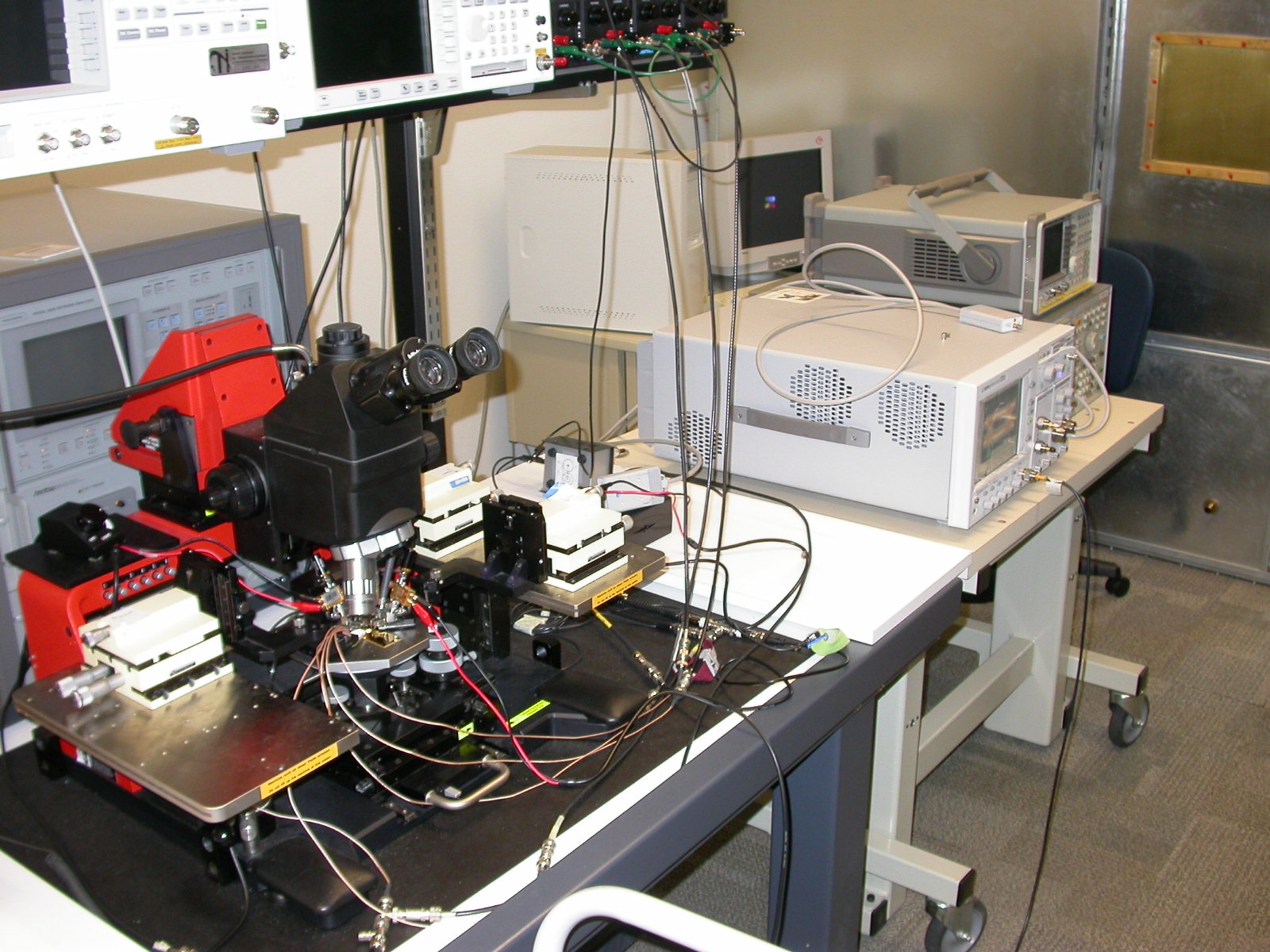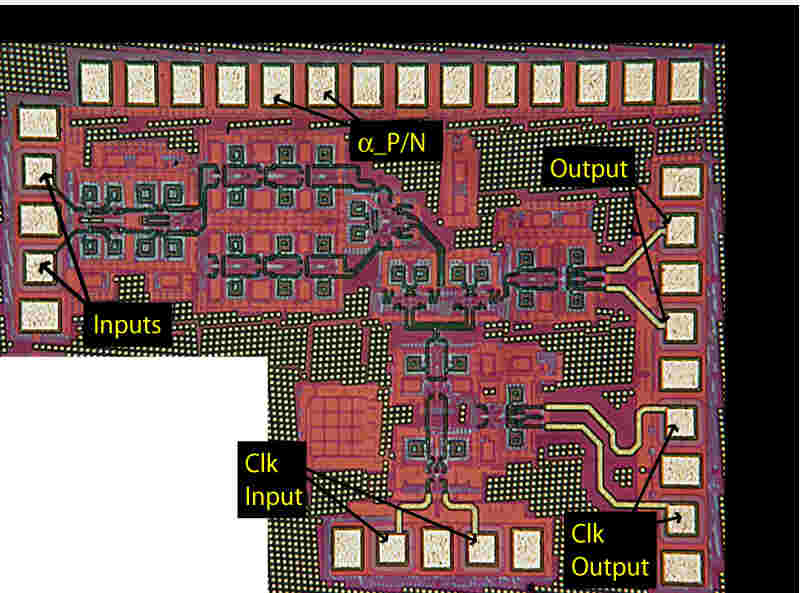Electronic Dispersion Compensation
Introduction
At high data rates (10+ Gb/s), optical fibres can no longer be considered an infinite bandwidth communication channel. Since different modes of electromagnetic wave propagation along the fibre experience different delay and attenuation, a narrow pulse at the transmitter will be spread out at the receiver.

Even in "single mode fibre", different polarizations of light propagate differently resulting in two pulses at the receiver for each transmitted pulse.

The result is intersymbol interference, which can be compensated for electrically using high-speed equalizers. However, performing electronic dispersion compensation at such high data rates is challenging. Furthermore, the dispersion can change over time requiring an adaptive, or at least programmable approach.
Objective
The goal is to increase the speeds and/or reach of optical fibre links using electronic signal processing with reasonable power and cost.
Research
Equalization is a simple method for controlling ISI in bandlimited channels. However, traditional analog filters will not operate at the required speeds. Alternative architectures such as traveling wave filters are required. Also, adapting the equalizer parameters is difficult while maintaining the link and operating at high speed.
Below is a picture of a typical test setup employed for characterizing a high-speed integrated equalizer up to 40 GHz. Wafer probing is used to obviate the need for expensive and lossy packaging at these frequencies. An eye diagram is visible on the oscilloscope.

Below are examples of two integrated circuits for electronic dispersion compensation that have been designed, fabricated and tested including the world's fastest CMOS linear equalizer, and the world's fastest decision feedback equalizer in silicon. For more details on these, see the list of publications.

